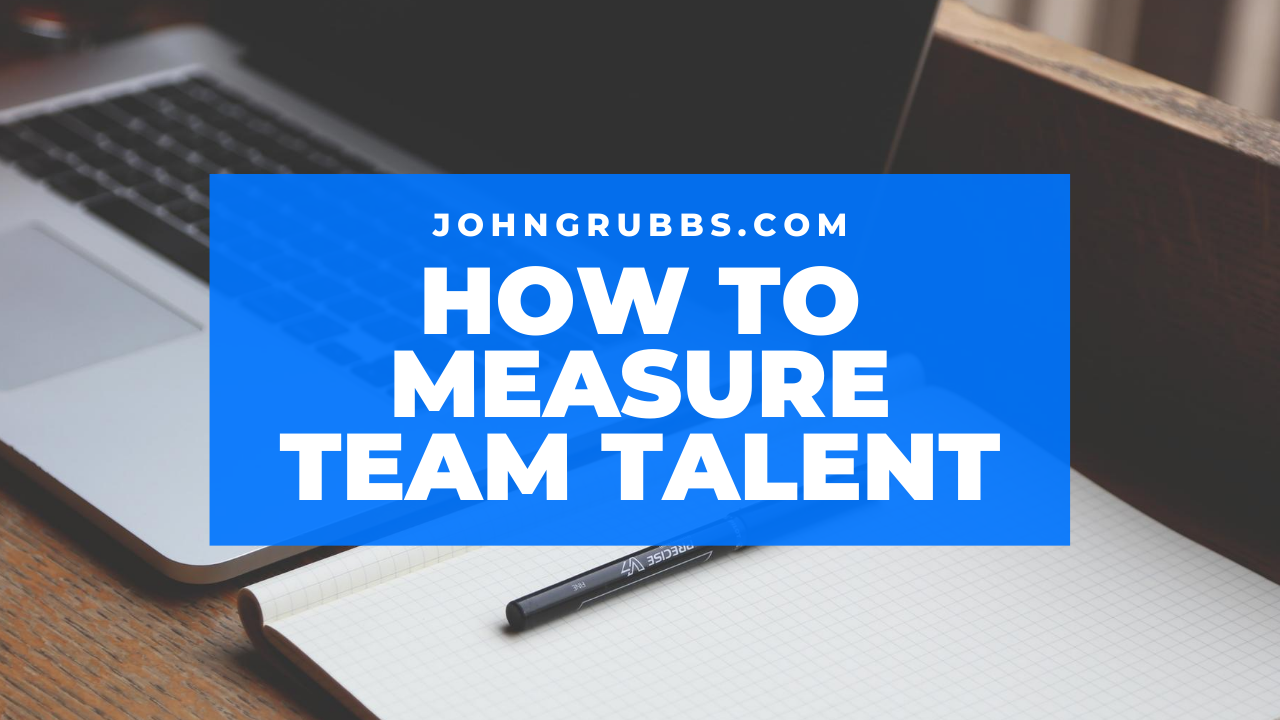|

What is the collective talent score for your organization? Can you measure how strong or weak your team is today? Is there a way to mathematically know whether you are growing or contracting your collective talent? Most organizations don’t measure talent. Why? Some measure results or turnover but have no clue why these results occur. These same companies fail to measure the impact from gaining or losing talent collectively. They rely on systems
and processes; however, they never quantify the collective talent that executes for the organization. Remarkably, the lack of talent quantification has not been discussed as essential for organizational success. What if systems and process are one side of the coin and a collective talent score is on the other side? Sound interesting? In the same way companies examine balance sheets, they should also analyze talent scores. This paradox resembles
analyzing a team by the playbook or statistics without analyzing each player’s impact.
First who, then what is a mantra from Jim Collins’ famous book, Good to Great. When we focus on the “who” first, we are presented with challenges. How good is the team I inherited? How good is the team I have developed? If we do not ask these questions and gain answers, how do we know how effective the team is at any given point in time? We can measure results; are we making a profit? How many sales
have closed? How many accidents have we had? These metrics are all trailing indicators. Success comes from measuring “leading” indicators that achieve "trailing" results. Does a high talent score correlate with higher performance? Let’s find out.
A realistic process to measure talent relies on consistency and takes into consideration both objective data and subjective input. In baseball for example, a five tool payer has running speed, arm strength, hits for average, hits for power, and can field a baseball. These tools can be measured to some degree. While they vary in importance by position, they give a manager an idea of what to look for in a potential player. Not all of these tools can be developed and
learned. Some (like speed and arm strength) are genetic gifts.
The five tools for business are similar. Some can be developed while others are genetic. The first tool for business success is skill. Skill is defined as the ability to perform assigned duties. The employee knows how to do something that contributes toward the success of the organization. Skills can be developed and quantified though observation and measurement. Some skills are specific to one job while others are general to many jobs.
Flying an airplane or operating a plasma table are both skills.
The second tool for business success is knowledge. Some consider skill and knowledge as synonymous; however, they are disparate for talent quantification. Knowledge is acquired through education and experience. It can be formal in terms of education or it can be organic in terms of experience. While one is not necessarily an indication of the other, education and experience are both developed over time. An individual can learn a skill such as changing an
oil filter in a machine but may not understand why and how often that skill must be deployed or utilized. Knowledge requires cognitive processes such as perception, association, and reasoning. Formal knowledge can be measured by testing or assessments, while experience is more difficult to measure. Experiential learning tends to be more organic; meaning that it develops over time. An individual of average intelligence who remains immersed in an environment will naturally
acquire knowledge over time.
Attitude is the third tool for business success. An employee with a positive attitude creates an environment for success to be achieved. A negative attitude inhibits organizational performance. Attitude is determined by a positive or negative response to people, activities, or events in a person’s environment. Attitude is interpreted as binary; positive or negative. As a determinant for attitude, we should assume positive intent when we are unable
to make a choice. If no evidence of negativity exists, default to positive.
Candor is the fourth tool for success in business. It is defined as being frank, open, and sincere; both verbally and non-verbally. The ability for an organization to be honest with itself is challenging. Hiring candid people promotes a candid organization. This skill can be learned but is comes more naturally for some than others. It may be more difficult for an introverted person to be candid; however, they can be coached and learn feedback techniques that
allow them to overcome this limitation, if they desire to do so.
The fifth business tool is grit. In psychology, grit is defined as a person’s ability to achieve a long-term goal by self-motivation. Grit is measured by an individual’s long-term commitment toward accomplishing something challenging. Finishing a college degree, learning a second language, or developing a martial art are examples of grit. Physical fitness or learning to play a musical instrument are also examples. To determine if someone has
grit (or not), we can use anecdotal evidence or behavioral interview questions. For example, if an individual goes to college part-time while working and caring for a family; it indicates they have grit. If someone taught themselves to play the guitar, they likely have grit.
Using these five business tools, how do we collectively assess a talent score? Consider each tool as binary to minimize subjectivity in the process. You have it or you do not. Consider your team for a moment. What if every member of your team has all five tools? They have strong job skills, they know why the skills are important, they have a positive attitude, they are candid, and they are
gritty when it comes to work. How will execution of current systems and processes lead to your organization’s success?
Now, conceptualize a large white board with each team member’s name in a box. In large organizations, teams will be sub-organized and analyzed separately. (If you played sports, visualize a depth chart with starters, second string, and so on.) To quantify a team’s talent score, we must first determine multipliers for each individual. Are they performing, developing, or struggling? Performing is measured through the accomplishment of
predetermined business objectives. Developing describes an individual that is in process somewhere between struggling and performing. Struggling describes someone that cannot (or will not) accomplish predetermined job functions or meet organizational commitments, for whatever reason.
Next, calculate an individual’s score based on the five tools. Each tool represents a numerical value of one. Joe has knowledge (1), attitude (1), candor (1), and grit (1). He lacks skill (0) because he is a recent college graduate, armed only with conceptual knowledge. Joe gets a tool score of 4. Next, rate Joe as performing, developing, or struggling. [Multipliers are: Performing earns a score of 3, developing earns a score of 2, and
struggling earns a score of 1.] Since Joe is developing, he earns a multiplier of 2. Joe has 4 tools developing (2) for the organization (4 tools x 2 = 8 talent score). Place an 8 in Joe’s talent box by his name.
Here is another example. Mary masters her job skills (1). She is highly intelligent and has deep knowledge in her job (1). She is candid and speaks her mind (1). She is negative about the company and her attitude (0) is bad. She is dissatisfied, lacks grit (0), and has been moved from job to job in the organization. Her attendance is terrible and she is struggling. As a result, she earns a multiplier of 1. Mary has 3 tools struggling
(1) for the organization (3 tools x 1 = 3 talent score). Place a 3 in Mary’s talent box by her name.
This is the last example. Cindy is a sales rock star…a rainmaker on the team. She has the skills (1). She is knowledgeable (1). She is candid (1). She is positive about the work (1). However, she tends to start and not finish work on projects. She often fails to enter information into the CRM that provides her boss clarity for sales forecasting. She lacks grit (0) for details. She is performing and earns a multiplier of 3. Cindy has
4 tools performing (3) for the organization (4 tools x 3 = 12 talent score). Place a 12 in Cindy’s talent box next to her name.
The value of this quantification process is...
Finish reading to discover the value
______________________________

Discover My Podcast

Leading the Tribes Video
Leading the Tribes Training - Book my 1-day class at your location for managers and supervisors.
Leading the Tribes Keynote Speech - Book my 1-hour speech for your event.
Call (903) 295-7400 Today!
-------------------------------
Keeping Top Talent Video

-----------------------------

Need a Keynote Speaker?

I'm always amazed at how fun you can make learning!
Tessa Conrad, Pak-Sher
Your excitement and energy as a speaker is amazing. Hearing you speak on your years of experience and insights on leadership and generational change was very relevant and something that we can all learn from and apply to our organizations.
Cliff McDaniel, Louisiana CPA Oil and Gas Conference
It was the best presentation that I have attended so far, You are the best speaker ever . I am so impressed that I have ordered 2 of your books on Amazon. So thank you for making a difference in people’s personal and professional lives.
Lovely Chandla, Hilton
John Grubbs' keynote message is powerful! John is able to clearly convey his knowledge and foresight on the generational changes that affect ALL of us. I had many A-ha moments with his vivid examples. We continue to talk about what his message taught us to this day. You will have to reach for a tissue to wipe tears of emotion and laughter. John's message is memorable and inspirational!
Maria Gallegos, Texas Chemical Council
Call John Grubbs (903) 295-7400


|






